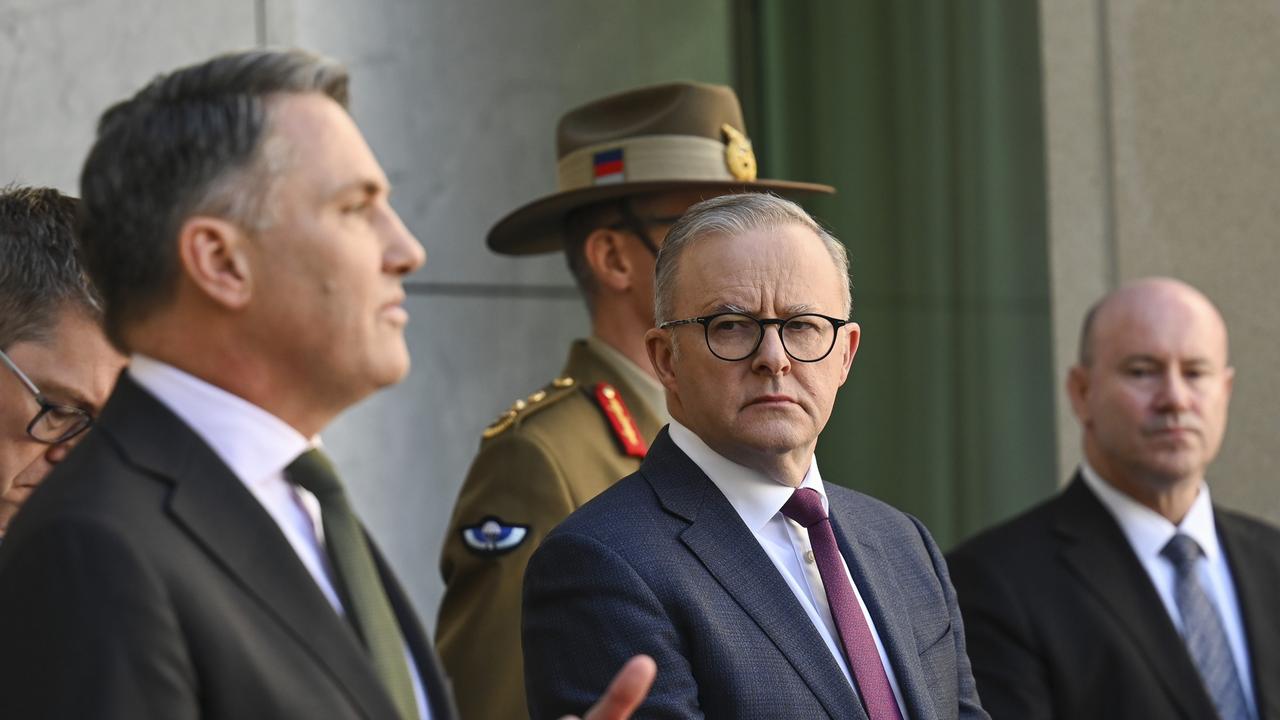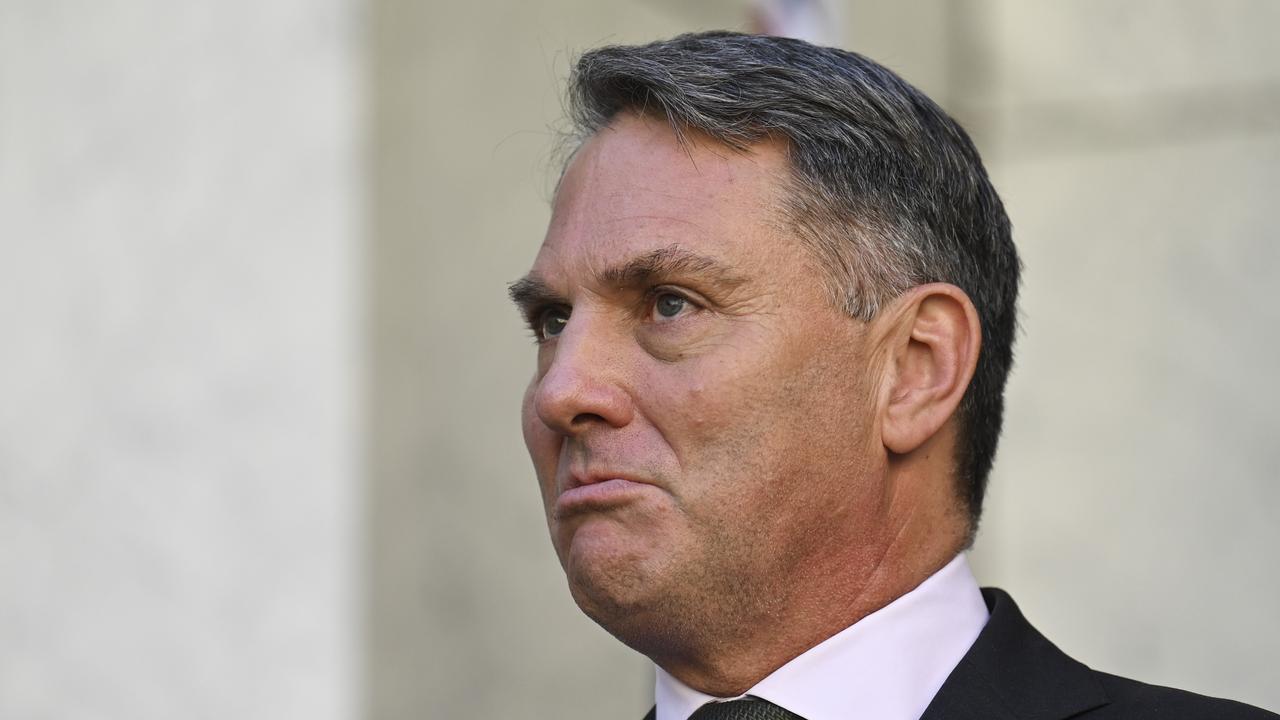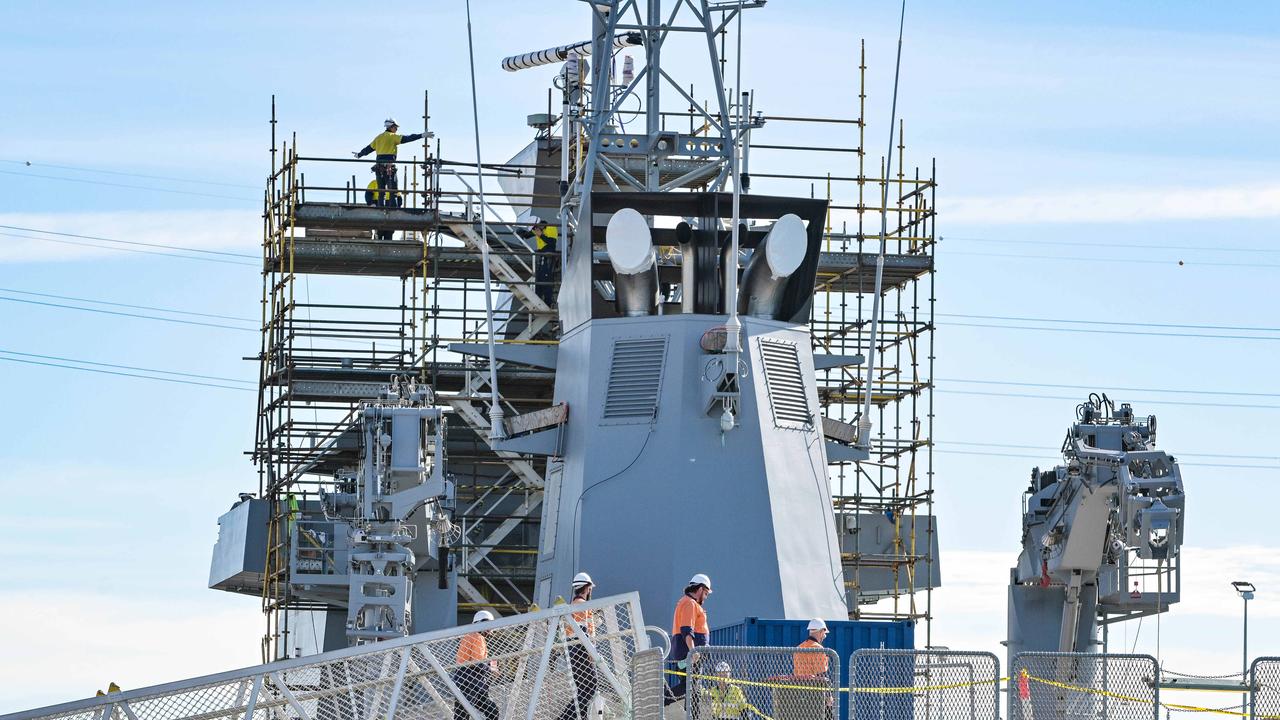Australia’s defence to get biggest overhaul in decades
Australia’s defence force is not fit for purpose to respond to the threat of military force or coercion, a bombshell review found.
Australia’s defence force is not fit for purpose to respond to the rapid militarisation of China, a landmark review has found.
A declassified review of the ADF found as it stands Australia is ill-equipped to defend itself and can no longer rely on “geography or warning time” ahead of conflict in the region.
The Defence Strategic Review, led by former chief of defence Sir Angus Houston and former defence minister Stephen Smith, looked at the location and make up of Australia’s military forces and the weapons they use.
“The threat of the use of military force or coercion against Australia does not require invasion … Cyber warfare is not bound by geography,” the reviewers said.

“The rise of the ‘missile age’ in modern warfare, crystallised by the proliferation of long-range precision strike weapons, has radically reduced Australia’s geographic benefits, the comfort of distance and our qualitative regional capability edge.”
An unclassified version of the DSR was made public on Monday. The government accepted, or accepted in principle all of the recommendations made – but not all of those were made public.
DEFENCE TO GET A NEW FOCUS
The most fundamental recommendation in the report was that Australia shift its defence posture from a fortress mindset to engaging beyond our borders.
It said that with rising tension, with the review specifically mentioning China, business as usual was no longer appropriate.
The review labelled the competition between China and the United States as the “defining feature of our region and our time”.
Speaking alongside the Prime Minister Anthony Albanese in Canberra, Defence Minister Richard Marles described the review as a “watershed moment” for defence.
The ADF will have six new priorities – to develop Australia’s nuclear powered submarine capability, longer range strike capacity, speeding up the integration of new technologies into the military, workforce retention and recruitment, and improving strategic co-operation within the Indo-Pacific.

WHAT IS CHANGING?
The review called for a rapid transformation of the ADF and identified three distinct time periods for defence planning – the next three years, the five-year period from 2026-2030, and 2031 and beyond.
In the near-term, the government will gut, delay or cancel projects that no longer meet the ADF’s needs – such as the third phase of the Land 400 infantry fighting vehicles and the second regiment of self-propelled howitzers.
Instead, a reprioritised to the acquisition of long-range missiles and developing Australia’s cyber and space capabilities.
Mr Marles stressed the long-range strike capacity currently used by the armed forces have a maximum range of 40km. The acquisition will focus on expanding that reach to up to 500km.
The scale up of air bases, ports and barracks, across Northern Australia was also identified as a major priority.
“Comprehensive upgrade of works on these bases must commence immediately, and fuel storage and supply issues should be rectified,” the review said.

The answer to where Australia’s east coast base for the nuclear-submarines would be located, long rumoured to be Port Kembla, was not mentioned in the review.
But it did change the language from base to facility – suggesting the capital required to expand an existing port could be much less than anticipated.
The last major review, undertaken in 1987 by former deputy secretary for defence’s strategy and intelligence Paul Dibb, described Australia as “one of the most secure countries in the world”.
Since then, China has undertaken the largest peacetime military build-up in recorded history.
On Monday, the DSR bluntly stated the 1987 approach was “no longer fit for purpose”.
“(The DSR) is focused on the defence of Australia in the face of potential threats in our region. Our nation and its leaders must take a much more whole-of-government and whole-of-nation approach to security,” it said.
HOW MUCH WILL IT COST?
Mr Marles said the response to the DSR will cost $19bn over the next four years, which includes the $9bn in spending already announced to fund the AUKUS nuclear-powered submarines.
Around $7.8bn of that will come from savings made through the gutting, delaying or cancelling of a number of projects.
The rest will come from a pot of money already within the defence budget.

The full cost of the recommendations were not made public. The review it was not able to calculate the price tag until “Defence has analysed the capability recommendations in the review and costed them”.
It’s understood that defence spending will not increase, despite the reviews recommendation, until the next decade.
Speaking to reporters, Mr Marles acknowledged that spending would have to grow but declined to say how much.
“It is absolutely our expectation that defence spending over the medium term, over the decade, will grow above the existing trajectory of growth that we inherited from the former government,” he said.
WORKFORCE CRISIS
An entire chapter of the review was dedicated to the workforce crisis facing the ADF. It was frank in its assessment that pay and service conditions and workplace culture needed to be improved.
It’s not entirely new news for the government and programs to entice young people into becoming skilled in areas the ADF requires were launched in the wake of AUKUS.

Asked how the government would convince people to sign up to a career in defence, the Defence Minister said it was about “telling the story” of team work to Australians.
“We‘ve actually seen the defence force go backwards, and that’s not acceptable. So I think it is about making it clear that there is a great opportunity in serving in our nation’s uniform,” he said.
Mr Marles flagged an announcement on boosting recruitment would be made in the lead up to the budget, but emphasised migration could not solve the workforce problem.
“We really need citizens to be doing that work from the point of view of our security requirements,” he said.
REVIEW CRITICAL OF ADF USE FOR NATURAL DISASTERS
An entire chapter of the review was dedicated to climate change and the support to domestic disaster relief, which was critical of the use of the ADF to mop up natural disasters.
It noted that while climate change was a national security issue, the ADF was not “structure or appropriately equipped to act as a domestic disaster recovery agency concurrently with its core function”.

“Climate events already place concurrency pressures on the ADF and this has negatively affected force preparedness, readiness and combat effectiveness,” the review said.
Prime Minister Anthony Albanese said there would be “further consideration” of how Australia deals with natural disasters in the wake of the review.
Asked if a federal civilian natural disaster agency was still on the table, Mr Albanese declined to say.
“We’ve got a pretty big announcement for today. I think that this will do for today, frankly. We’re dealing with it pretty comprehensively and this is what we’re dealing with today,” he said.



